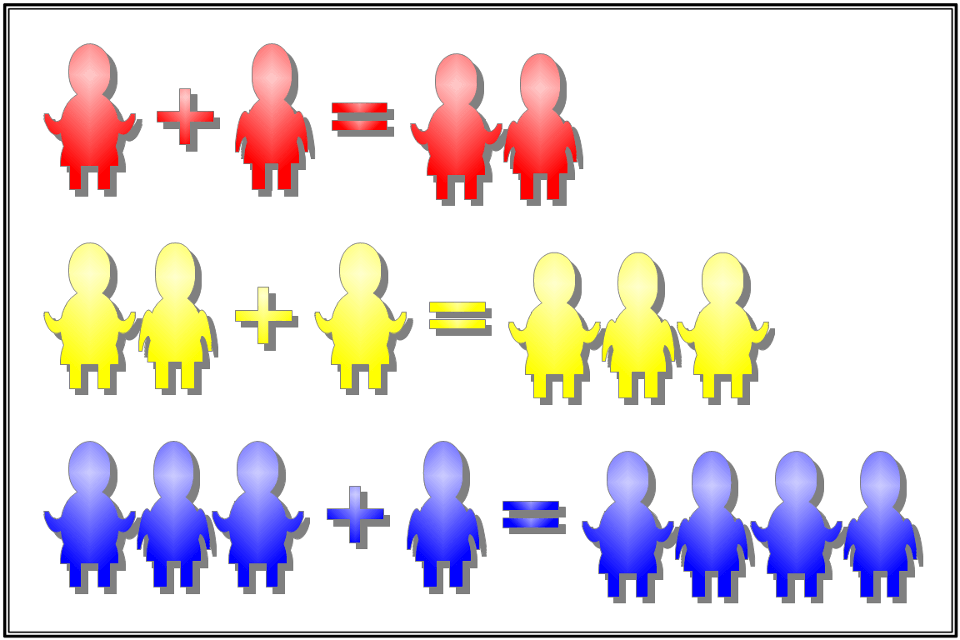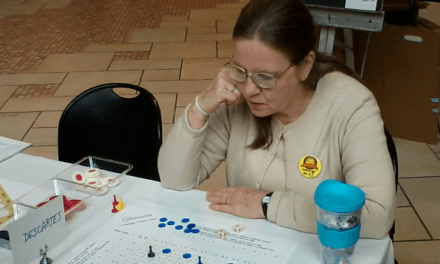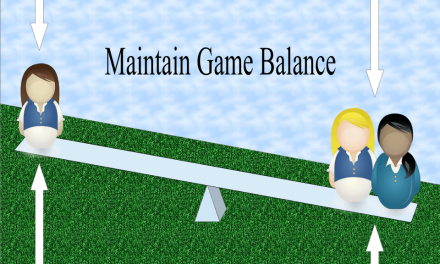In our post of February 13, 2019 (two weeks ago), we talked about :
Maintaining Game Balance for a Variable Number of Players
And we said that applying a little math might help us to do just that.
– – –
So, let’s go straight to the math. Or at least, to the set-up for the math.
And concentrate on the effect of variable piece count.
That’s right, piece count. Because, the sheer number of pieces in any given game, more than anything else (other than theme, artwork, and an easy-to-comprehend rulebook), can directly affect playability and the very joy of the game.
Step 1 – outline broad goals:
-
Produce a game that is both playable and enjoyable as a solitaire.
-
And equally playable and enjoyable when played by two players.
-
And by 3, 4, 5, and 6 players.
Step 2 – choose game mechanics:
-
Mechanic A
-
Mechanic B
-
Mechanic C
-
And … what have you. Just make a rough list.
Step 3 – pre-plan the probability of game events:
-
Determine the probability you would like to see for any given event that will happen in the game.
– – –
Let’s pause here a minute.
Why should we determine probability ahead of time?
Well, really, you don’t have to do this at all. But it is one approach that you can at least consider.
– – –
Step 4 – the math:
-
Run a little math for each of our game mechanics (as established in Step 2) – and here’s the key:
-
Do this separately for each player count!
Step 5 – make adjustments:
-
Adjust the number of pieces that actually generate probability for any given mechanic (Step 2)
-
And for any desired outcome (which you sketched out in Step 3)
-
Remember our thesis: piece count can either stabilize or destabilize our game
-
Keep running math on a rough what-if basis (see Step 4)
Step 6 – repeat as needed:
-
Be flexible
-
You may have to compromise and vary your ideal percentages by a few percent here and there
-
But the overall feel of the game can be preserved by applying these methods
– – –
Okay, time for some examples:
Let’s say you want a game that uses cards that are drawn from a deck of a given size. And you want each player to have a 10% chance of receiving a certain type of card, maybe a resource card.
How big should that deck be?
You might think this is a no-brainer: just have 1 of these cards for each 10 cards in the deck.
But is that really the math to apply?
Consider this example:
If we use 20 cards for just 2 players (with only 2 resource cards in the deck), Player 1 has a 1/20 chance to draw any particular card as his first draw. And a 1/10 chance that that card will be his or her target card, a resource card.
But what about Player 2?
Well, that all depends on what player 1 drew and thus, what is left in the deck.
If player 1 drew a resource card, and only drew 1 card from the deck, then player 2 would have a 1/19 chance of drawing any given card and a 1/19 chance of drawing the remaining resource card. Which is a different probability than that offered to player 1, since 1/10 does not equal 1/19 . : )
In fact, 1/10 is about double 1/19. (10% as compared to 5.26%)
Now you might say – and you’d be right – that when drawing cards, the probability of drawing a certain card changes constantly over the course of the game.
But, if the deck is deep enough (contains enough cards) this variability can be dampened (and have less effect).
So, here we go with attempt #2 – a bigger deck with more cards.
What do the percentages look like if we use a 50 card deck with 5 resource cards (which is also 10%)?
Player 1 would then have a 1/50 chance to draw any particular card as his first draw. And a 5/50 chance (10%) that that card will be his or her target card, a resource card.
But what about Player 2?
Well, that all depends on what player 1 drew and thus, what is left in the deck.
If player 1 drew a resource card, and still only drew that 1 card from the deck, then Player 2 would have a 1/49 chance of drawing any given card and a 4/49 chance of drawing one of the remaining resource cards. Which is still a different probability than that offered to Player 1 (since 5/50 does not equal 4/49) but not by as much!
Instead of being almost double (since 5/50= 10% and 4/49=8.16%) we now have a difference of less 20%.
So, on an elementary level, we begin to see that making coarse adjustments to deck size can affect the probability of events in a game.
And so can the size dice that we choose (d8, d10, d12, etc. instead of always d6), the number of chits in a blind-draw resource bag, or just about anything else that can generate a variable outcome in the first place.
Now for the big question, How do you apply these methods?
1). For cards, try to determine these factors:
-
deck size (or sizes, if you use more than 1 deck) that will be used for a certain player count
-
hand size (which can also vary according to player count)
-
draw count (how many cards can be drawn at a time during the game)
-
re-usability of your cards (Do they re-enter the game at some point?)
-
and the density of each type of card that comprises your deck (or decks)
2). For dice, try to determine:
-
the size dice you will use (facet count)
-
the quantity of these dice
-
and the associations you make with any particular “landings” or “rolls” of these dice
-
and don’t forget this point: You can always mandate a different set of dice when the game is played by a different number of players
3). For chits, or counting cubes, or random meeples, or what have you in a blind-draw bag:
-
the count of each piece you include (when X, Y, or Z players play your game)
-
the number of chits/cubes/meeples/etc. that can be drawn at a time
-
whether they will later re-enter the bag (to be recycled)
-
and what these items allow the player to do or how they will otherwise be used in the game
4). For anything else (even items that haven’t been conceived of yet):
-
draw some parallel to one or more of the above piece types and go from there : )
And here’s some parting advice:
Try not to get so bogged down in having the perfect game from the onset that you forget the purpose of the game as a whole. Which should always be … to have fun!



